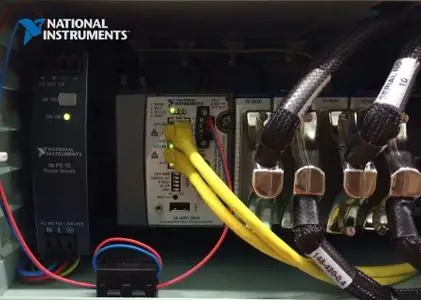

For complex algorithms or large-scale code, a programmer must possess extensive knowledge of the special LabVIEW syntax and the topology of its memory management. This is a benefit on one side, but there is also a certain danger of underestimating the expertise needed for high-quality G programming. The LabVIEW programming environment, with the included examples and documentation, makes it simple to create small applications. The graphical approach also allows nonprogrammers to build programs by dragging and dropping virtual representations of lab equipment with which they are already familiar. This implies each VI can be easily tested before being embedded as a subroutine into a larger program. Thus a virtual instrument can be run as either a program, with the front panel serving as a user interface, or, when dropped as a node onto the block diagram, the front panel defines the inputs and outputs for the node through the connector pane. Nodes are connected using wires, e.g., two controls and an indicator can be wired to the addition function so that the indicator displays the sum of the two controls. Collectively controls, indicators, structures, and functions are referred to as nodes. The structures and functions are found on the Functions palette and can be placed on the back panel. The back panel also contains structures and functions which perform operations on controls and supply data to indicators. All of the objects placed on the front panel will appear on the back panel as terminals. The back panel, which is a block diagram, contains the graphical source code. Indicators are outputs: they indicate, or display, the results based on the inputs given to the VI.

Controls are inputs: they allow a user to supply information to the VI. The front panel is built using controls and indicators. The last is used to represent the VI in the block diagrams of others, calling VIs. Each VI has three components: a block diagram, a front panel, and a connector pane. LabVIEW programs-subroutines are termed virtual instruments (VIs). LabVIEW integrates the creation of user interfaces (termed front panels) into the development cycle. : 1–2 Multi-processing and multi-threading hardware is exploited automatically by the built-in scheduler, which multiplexes multiple OS threads over the nodes ready for execution. Since this might be the case for multiple nodes simultaneously, LabVIEW can execute inherently in parallel. These wires propagate variables and any node can execute as soon as all its input data become available. The execution flow is determined by the structure of a graphical block diagram (the LabVIEW-source code) on which the programmer connects different function-nodes by drawing wires. If there is enough data available to a subVI or function, that subVI or function will execute. The programming paradigm used in LabVIEW, sometimes called G, is based on data availability.
#Labview electrical power suite 2011 free
NI released the free for non-commercial use LabVIEW and LabVIEW NXG Community editions on April 28, 2020. The latest versions of LabVIEW are LabVIEW 2023 Q1 (released in April 2023) and LabVIEW NXG 5.1 (released in January 2021). LabVIEW is commonly used for data acquisition, instrument control, and industrial automation on a variety of operating systems (OSs), including macOS and other versions of Unix and Linux, as well as Microsoft Windows. The G dataflow language was originally developed by LabVIEW. The graphical language is named "G" not to be confused with G-code. Laboratory Virtual Instrument Engineering Workbench ( LabVIEW) : 3 is a system-design platform and development environment for a visual programming language from National Instruments. Data acquisition, instrument control, test automation, analysis and signal processing, industrial control, embedded system design


 0 kommentar(er)
0 kommentar(er)
